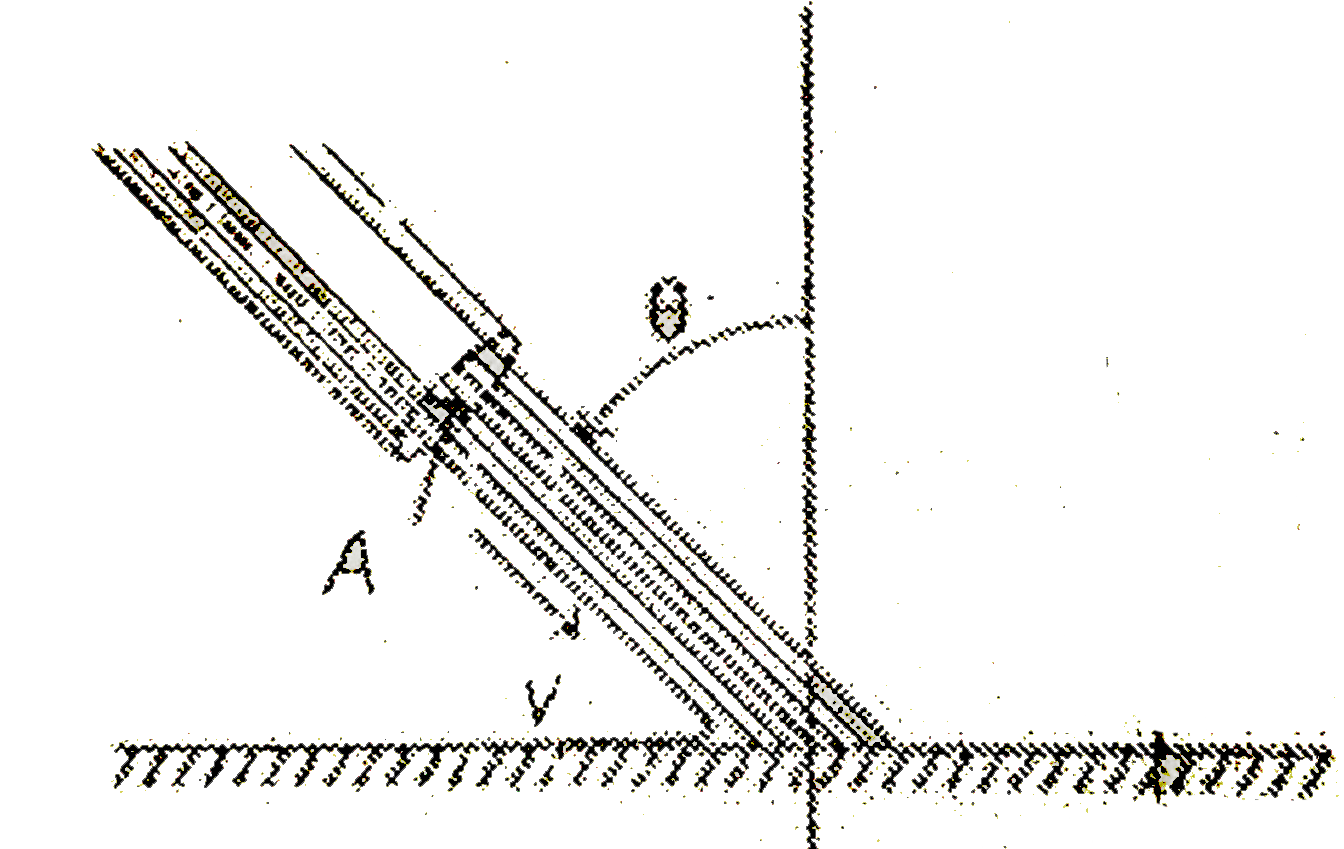Assume that a drop of liquid evaporates by decreases in its surface energy, so that its temperature remains unchanged. What should be the minimum radius of the drop for this to be possible? The surface tension is T, density of liquid is ρ and L is its latent heat of vaporization.
The correct Answer is:A
To solve the problem, we need to find the minimum radius of a drop of liquid that can evaporate by decreasing its surface energy while keeping its temperature constant. The given parameters are surface tension T, density of the liquid ρ, and the latent heat of vaporization L.
1. Understanding Surface Energy:
The surface energy E of a drop is given by the formula:
E=T×A
where A is the surface area of the drop. For a spherical drop of radius r, the surface area A is:
A=4πr2
Therefore, the surface energy becomes:
E=T×4πr2
2. Change in Surface Energy:
When the drop evaporates, its radius decreases by a small amount dr. The change in surface area dA due to this decrease is:
dA=4πr2−4π(r−dr)2
Simplifying this gives:
dA=4π(r2−(r2−2r⋅dr+(dr)2))=4π(2r⋅dr−(dr)2)≈8πr⋅dr(for small dr)
3. Decrease in Surface Energy:
The decrease in surface energy dE is then:
dE=T⋅dA=T⋅8πr⋅dr
4. Heat Required for Vaporization:
The heat dQ required to vaporize the liquid is given by:
dQ=mass×L=ρ⋅V⋅L
The volume V of the drop is:
V=43πr3
Thus, the mass m of the drop is:
m=ρ⋅43πr3
Therefore, the heat required is:
dQ=ρ⋅43πr3⋅L
5. Setting the Decrease in Surface Energy Equal to Heat Required:
For the evaporation process to occur without a change in temperature, the decrease in surface energy must equal the heat required for vaporization:
T⋅8πr⋅dr=ρ⋅43πr3⋅L
6. Cancelling Common Terms:
We can cancel π from both sides and also dr (assuming dr≠0):
8T=43ρr2L
7. Solving for Minimum Radius r:
Rearranging the equation gives:
r2=8T⋅34ρL=6TρL
Taking the square root:
r=√6TρL
Final Answer:
The minimum radius r of the drop for it to evaporate without a change in temperature is:
r=√6TρL
The surface energy E of a drop is given by the formula:
E=T×A
where A is the surface area of the drop. For a spherical drop of radius r, the surface area A is:
A=4πr2
Therefore, the surface energy becomes:
E=T×4πr2
When the drop evaporates, its radius decreases by a small amount dr. The change in surface area dA due to this decrease is:
dA=4πr2−4π(r−dr)2
Simplifying this gives:
dA=4π(r2−(r2−2r⋅dr+(dr)2))=4π(2r⋅dr−(dr)2)≈8πr⋅dr(for small dr)
The decrease in surface energy dE is then:
dE=T⋅dA=T⋅8πr⋅dr
The heat dQ required to vaporize the liquid is given by:
dQ=mass×L=ρ⋅V⋅L
The volume V of the drop is:
V=43πr3
Thus, the mass m of the drop is:
m=ρ⋅43πr3
Therefore, the heat required is:
dQ=ρ⋅43πr3⋅L
For the evaporation process to occur without a change in temperature, the decrease in surface energy must equal the heat required for vaporization:
T⋅8πr⋅dr=ρ⋅43πr3⋅L
We can cancel π from both sides and also dr (assuming dr≠0):
8T=43ρr2L
Rearranging the equation gives:
r2=8T⋅34ρL=6TρL
Taking the square root:
r=√6TρL
The minimum radius r of the drop for it to evaporate without a change in temperature is:
r=√6TρL
Topper's Solved these Questions
- BOOK - DC PANDEY ENGLISHCHAPTER - FLUID MECHANICSEXERCISE - Solved Examples21videos
FLUID MECHANICS
- BOOK - DC PANDEY ENGLISHCHAPTER - FLUID MECHANICSEXERCISE - Miscellaneous Examples10videos
FLUID MECHANICS
- BOOK - DC PANDEY ENGLISHCHAPTER - EXPERIMENTSEXERCISE - Subjective15videos
EXPERIMENTS
- BOOK - DC PANDEY ENGLISHCHAPTER - GENERAL PHYSICSEXERCISE - INTEGER_TYPE2videos
GENERAL PHYSICS
Similar Questions
If the temperature of a liquid is increased, then its surface tension
View SolutionAssume that a rain drop evaporates at a rate proportional to its surface area. Form a differential equation involving the rate of change of the radius of the rain drop.
View SolutionWhat should be the radius of a water drop so that the excess pressure inside it is 0.2 atm? Surface tension of water is 72×10−3N/m?
View SolutionOn heating a liquid, its surface tension
View SolutionIf a spherical rain drop evaporates at a rate proportional to its surface area. Form a differential equation indicating the rate of change of the radius of the rain drop.
View SolutionA spherical rain drop evaporates at a rate proportional to its surface area at any instant t. The differential equation giving the rate of change of the radius of the rain drop is _____
View SolutionA spherical rain drop evaporates at a rate proportional to its surface area at any instant t. The differential equation giving the rate of change of the radius of the rain drop is _____
View SolutionSpherical rain drop evaporates at a rate proportional to its surface area. The differential equation corresponding to the rate of change of the radius of the rain drop if the constant of proportionality is K>0 is
View SolutionA liquid of diameter D breaks up into 64 tiny drops. If the surface tension of the liquid is σ what is the change in energy?
View SolutionA stream of liquid, set at an angle θ, is directed against a plane surface (figure). The liquid, after hitting the surface, spreads over it. Find the pressure on the surface. The density of the liquid is ρ and its velocity is v.
 View Solution
View Solution

